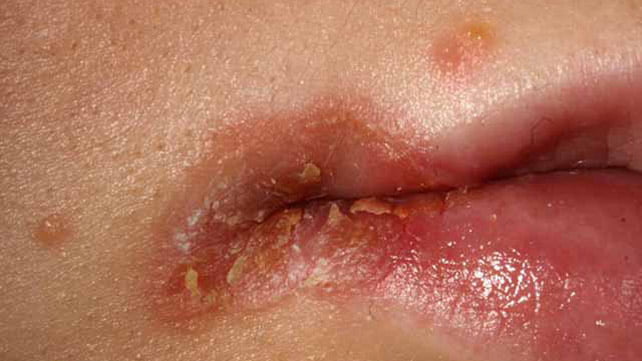This is an absence of menstruation, when you have one or more missed menstrual periods. Women who have missed at least 3 menstrual periods in a row suffer from this condition, as do girls who have not begun with their menstruation by age of fifteen. Pregnancy is the most common causes for amenorrhea. But also there are other causes for amenorrhea in which are included problems with glands that help regulate hormone levels and problems with the reproductive organs. In the most cases is needed the treatment for underlying cause because this can help to resolve the amenorrhea. [1]
Symptoms: The absence of menstrual periods is the main sign of amenorrhea. Depending on the cause for this condition, you can also experience other signs and symptoms with the absence of periods, such as:
- Acne
- Pelvic pain
- Excess facial hair
- Vision changes
- Headache
- Hair loss
- Milky nipple discharge
If you have missed at least 3 menstrual periods in a row, then you should talk with your doctor. Also if you have never had a menstrual period and you are age fifteen or older, then you should talk with your doctor.
Causes of Amenorrhea
There are many different reasons which can lead to amenorrhea. Some causes are normal during the course of a woman’s life while other causes can be as results of side effect of medication or a sign of a medical problem.
- Natural amenorrhea: During the normal course of woman’s life, she can experience amenorrhea for natural reasons [2] such as:
- Menopause
- Pregnancy
- Breast – feeding
- Contraceptives: There are some women who take birth control pills and they may not have periods. Even they have stopped taking oral contraceptives; it can take some time before they have regular ovulation and menstrual return. Contraceptives which are implanted or injected can also lead to amenorrhea, as well as some types of intrauterine devices. [3]
- Medications: There are certain medications [4] which can lead to stop of the menstrual periods such as:
- Allergy medications
- Blood pressure drugs
- Antidepressants
- Cancer chemotherapy
- Antipsychotics

Causes of Amenorrhea
- Lifestyle factors: There are some lifestyle factors [2] which can lead to amenorrhea such as :
- Stress: It is known fact that the mental stress can temporarily alter the functioning of the hypothalamus. This is an area of the brain which controls the hormones that are regulating your menstrual cycle. Menstruation and ovulation can stop as a result of it. After your stress decreases, then the regular menstrual periods usually resume. [5]
- Low body weight: If you have excessively low body weight, about 10% under your normal weight, can interrupt many hormonal functions in your body which is potentially halting the ovulation. Also, women who suffer from some eating disorder such as bulimia or anorexia, often stop having periods because they have abnormal hormonal changes in their bodies.
- Excessive exercise: Women, who participate in some activities which require rigorous training such as ballet, can have problems with their menstrual periods. They (menstrual periods) can be interrupted. There are several factors which combine to contribute to the loss of menstrual periods in athletes, such as high energy expenditure, stress and low body fat. [6]
- Hormonal imbalance: There are many types of medical problems which can cause hormonal imbalance such as:
- Premature menstruation: Menopause usually starts around age of 50. But there are some women in whom the ovarian supply of eggs diminishes before age of 40 and their menstruation stops.
- Pituitary tumor: A benign (noncancerous) tumor in the pituitary gland can interfere with the hormonal regulation of menstruation.
- Thyroid malfunction: Hyperthyroidism (an overactive thyroid gland) and hypothyroidism (an underactive thyroid gland) can lead to irregularities in which amenorrhea is also included.
- PCOS (Polycystic ovary syndrome): This condition causes high and sustained levels of hormones, rather than the fluctuating levels that are seen in the normal menstrual cycle of women [7].
Risk factors:
- Athletic training
- Family history
- Eating disorders
Above are some of the main factors which can increase your risk of amenorrhea.
References:
[1] Eunice Kennedy Shriver National Institute of Child Health and Human Development. What causes amenorrhea? Retrieved from www.nichd.nih.gov/health/topics/amenorrhea/conditioninfo/causes
[2] Khan NT, Jameel N. Amenorrhea-An abnormal cessation of normal menstrual cycle. Clinical Journal of Obstetrics and Gynecology. 2020.
[3] Tolis G, Ruggere D, Popkin DR, et al. Prolonged amenorrhea and oral contraceptives. Fertility and Sterility. 1979;32(3):265-8.
[4] Eunice Kennedy Shriver National Institute of Child Health and Human Development. What are the treatments for amenorrhea? Retrieved from nichd.nih.gov
[5] Allsworth JE, Clarke J, Peipert JF, et al. The influence of stress on the menstrual cycle among newly incarcerated women. Womens Health Issues. 2007;17(4):202–9.
[6] Cho GJ, Han SW, Shin JH, Kim T. Effects of intensive training on menstrual function and certain serum hormones and peptides related to the female reproductive system. Medicine. 2017;96(21):e6876.
[7] Arentz S, Abbott JA, Smith CA, Bensoussan A. Herbal medicine for the management of polycystic ovary syndrome (PCOS) and associated oligo/amenorrhoea and hyperandrogenism; a review of the laboratory evidence for effects with corroborative clinical findings. BMC Complementary Medicine and Therapies. 2014;14:511.





[…] recent birth or miscarriage, diabetes, irritable bowel syndrome, tuberculosis, liver disease, hormonal imbalance, thyroid disorders, menopause, anemia, significant weight loss or gain and eating disorders. Also […]